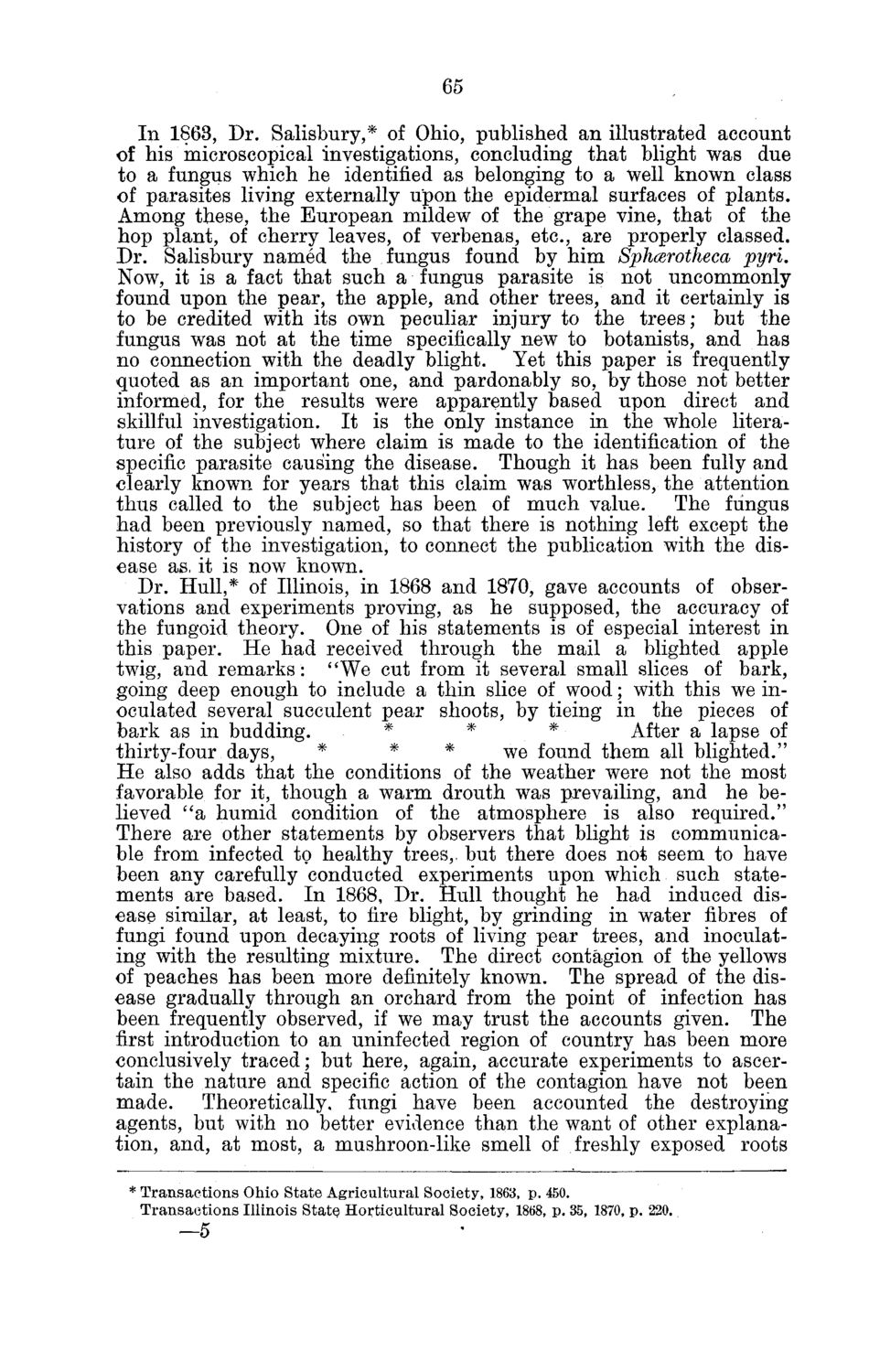| |
| |
Caption: Board of Trustees Minutes - 1880
This is a reduced-resolution page image for fast online browsing.

EXTRACTED TEXT FROM PAGE:
65 In 1863, Dr. Salisbury,* of Ohio, published an illustrated account of his microscopical investigations, concluding that blight was due to a fungus which he identified as belonging to a well known class of parasites living externally upon the epidermal surfaces of plants. Among these, the European mildew of the grape vine, that of the hop plant, of cherry leaves, of verbenas, etc., are properly classed. Dr. Salisbury named the fungus found by him Sphcerotheca pyri. Now, it is a fact that such a fungus parasite is not uncommonly found upon the pear, the apple, and other trees, and it certainly is to be credited with its own peculiar injury to the trees; but the fungus was not at the time specifically new to botanists, and has no connection with the deadly blight. Yet this paper is frequently quoted as an important one, and pardonably so, by those not better informed, for the results were apparently based upon direct and skillful investigation. It is the only instance in the whole literature of the subject where claim is made to the identification of the specific parasite causing the disease. Though it has been fully and clearly known for years that this claim was worthless, the attention thus called to the subject has been of much value. The fungus had been previously named, so that there is nothing left except the history of the investigation, to connect the publication with the disease as, it is now known. Dr. Hull,* of Illinois, in 1868 and 1870, gave accounts of observations and experiments proving, as he supposed, the accuracy of the fungoid theory. One of his statements is of especial interest in this paper. He had received through the mail a blighted apple twig, and remarks: "We cut from it several small slices of bark, going deep enough to include a thin slice of wood; with this we inoculated several succulent pear shoots, by tieing in the pieces of bark as in budding. . * * * After a lapse of thirty-four days, * * * we found them all blighted." He also adds that the conditions of the weather were not the most favorable for it, though a warm drouth was prevailing, and he believed "a humid condition of the atmosphere is also required." There are other statements by observers that blight is communicable from infected to healthy trees,, but there does not seem to have been any carefully conducted experiments upon which such statements are based. In 1868, Dr. Hull thought he had induced disease similar, at least, to fire blight, by grinding in water fibres of fungi found upon decaying roots of living pear trees, and inoculating with the resulting mixture. The direct contagion of the yellows of peaches has been more definitely known. The spread of the disease gradually through an orchard from the point of infection has been frequently observed, if we may trust the accounts given. The first introduction to an uninfected region of country has been more conclusively traced; but here, again, accurate experiments to ascertain the nature and specific action of the contagion have not been made. Theoretically, fungi have been accounted the destroying agents, but with no better evidence than the want of other explanation, and, at most, a mushroon-like smell of freshly exposed roots * Transactions Ohio State Agricultural Society, 1863, p. 450. Transactions Illinois State Horticultural Society, 1868, p. 35, 1870, p. 220. —5
| |